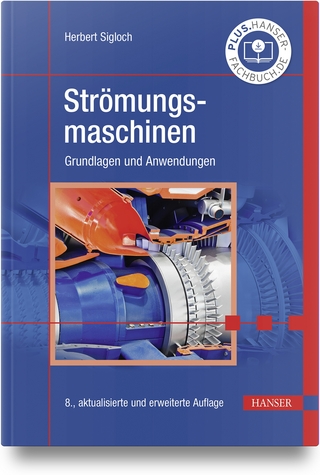
Computational Methods in Multiphase Flow
WIT Press (Verlag)
978-1-84564-030-9 (ISBN)
The topic of multiphase flow is broad, encompassing a variety of fluids, transported solids and flow regimes. Research in multiphase flows is driven by the challenge of understanding such complex phenomena, as well as by practical considerations dictated by technological needs. Despite recent advances in experimental and computational capabilities, multiphase flows still present many open questions. This volume covers a broad spectrum of the most recent research, ranging from basic research, to industrial applications, to the development of new numerical simulation techniques. Originally presented at the Third International Conference on Computational Methods in Multiphase Flow, the papers included are divided into the following topic areas: Basic Science; DNS and Other Simulation Tools; Measurement and Experiments; and Applications.
Section 1: Composites Characterizing spatial heterogeneity in polydisperse particle distributions; An analysis of internal strains in unidirectional and chopped graphite fibre composites based on x-ray diffraction and micro Raman spectroscopy measurements; The dynamic response of the asymmetric composite laminated beam carrying moving masses; A model to study slit damaged braided fabric structures; Characterization of brake pad friction materials Section 2: Alloys Second phase particle distribution and its effect on the formability of aluminum alloys; Investigation of aging heat treatment on microstructure and mechanical properties of 316L austenitic stainless steel weld metal; Crystal plasticity associated with crack stability in single crystals Section 3: Cements Constitutive law of structural concrete under geochemical processes; Simulation of the behaviour of fully-graded concrete at a mesoscopic level based on a rigid body spring discrete element model Section 4: Biomaterials A novel elastometer for soft tissue; Micromechanical study of green wood subjected to mode I fracture Section 5: Damage mechanics Thermo-mechanical model of a cardboard-plaster-cardboard composite plate submitted to fire load and experiments; Hysteretic characterization of slit-type steel plates subjected to shear deformations Section 6: Thermal analysis A technique for measuring the dynamic behaviour of materials at elevated temperatures with a compressive SHPB; High temperature properties and the crack susceptibility of new steel grades for automotive purposes; Thermogravimetric analysis of novel brake friction materials Section 7: Image analysis Using synchrotron computed microtomography to quantify 3D micro geometrical changes in multimaterials; Fast acquisition high-resolution synchrotron radiation X-ray microtomography for academic and industrial purposes; Experimental improvements for micro-tomography of paper and board; Polymeric foam behaviour under impact tests: deformation study by micro tomography; Optical measurement of a 3D displacement field using one camera; Similitude law evaluation for composite structures using optical techniques; Three-dimensional digital microstructure; Accurate sintering morphologies from Monte Carlo modelling; Organic coatings on metal surfaces for corrosion protection; Combined use of Mossbauer spectroscopy and X-ray diffraction for the study of order-disorder in tin(II)-containing fluoride ion conductors Section 8: Continuum methods Finite element based modelling of micro-mechanical response of computer simulated 'realistic' microstructures with spatial heterogeneity at different length scales; A comparison between static and dynamic inverse modelling for the identification of orthotropic elastic material parameters; Characterizing the frictional interface between PCBN and 1018 steel for friction stir welding numerical models; Optimal topology of eigenstrains in the assessment of tunnel structures Section 9: Particle models Characterization of dislocation in underground mass using coupled modeling; Bumps in deep mines using free hexagons
| Erscheint lt. Verlag | 17.10.2005 |
|---|---|
| Reihe/Serie | WIT Transactions on Engineering Sciences ; No. 50 |
| Zusatzinfo | Illustrations, |
| Verlagsort | Southampton |
| Sprache | englisch |
| Maße | 155 x 230 mm |
| Themenwelt | Naturwissenschaften ► Physik / Astronomie ► Strömungsmechanik |
| ISBN-10 | 1-84564-030-6 / 1845640306 |
| ISBN-13 | 978-1-84564-030-9 / 9781845640309 |
| Zustand | Neuware |
| Haben Sie eine Frage zum Produkt? |
aus dem Bereich


